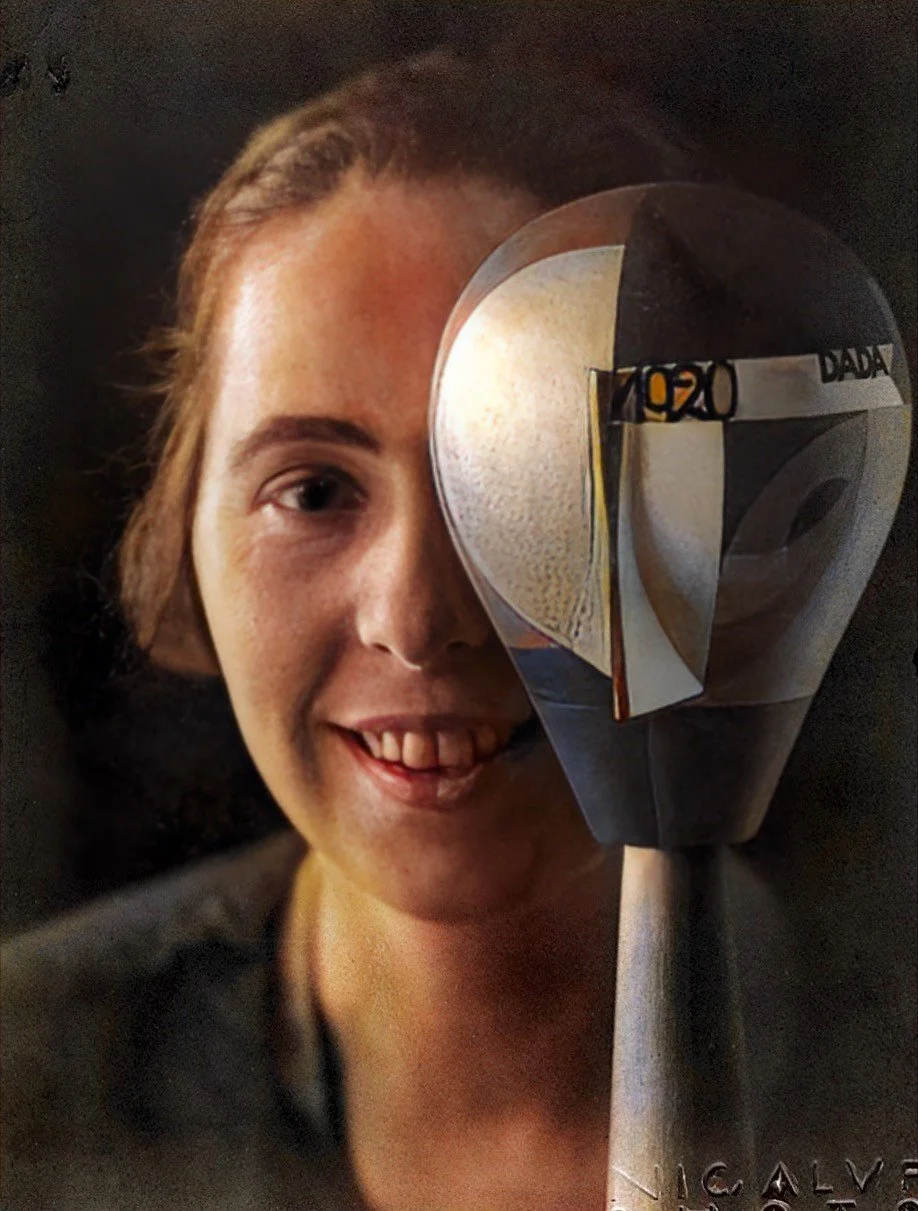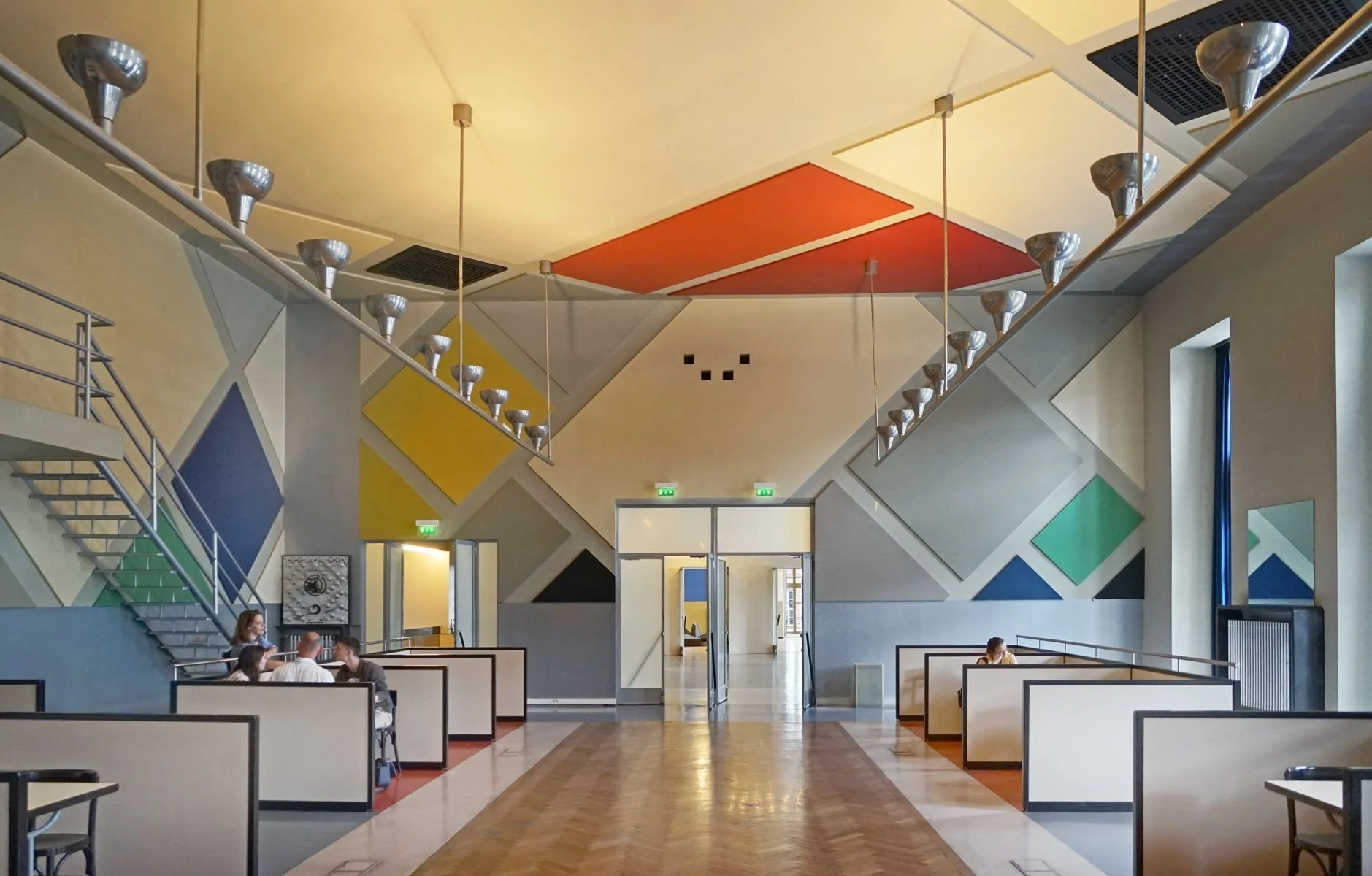The Groove Issue 85 - Why Hybrid Genres Are Best For Creative Success
WHY HYBRID GENRES ARE BEST FOR CREATIVE SUCCESS
Once upon a time, people used to think that being a hyper specialist was a great thing for their careers. But as artificial intelligence got better and better and careers ranging from workers in factories to salespeople on the phone became replaced by machines, the myth of the super-expert came down crumbling.
Unless you are a physician, in which case being a hyper specialist is a good thing (even though amazing discoveries, leaps and groundbreaking ideas always come from the cross-pollination of fields), having a diverse range of interests, and weaving them together in whatever you do, will pay off.
Usually, the most creative careers always happen when you mix two or more different interests into what you do. Here are a few thoughts to ponder:
Have a Range
Sophie Taeuber-Arp in 1920 with one of her Dada heads.
Earlier this year I went to see the retrospective of Sophie Taeuber-Arp at MoMA and was blown away by all she accomplished in her short life.
Taeuber-Arp was a Swiss abstract artist, teacher, dancer, writer, sculptor, designer, and architect who worked with everything that piqued her curiosity. From textiles to wood, nothing was off-limits for her creative mind.
You may not have heard of her for two reasons: first, she died relatively young at the age of 53, a victim of a freak accident where she slept with a stove on and got poisoned with carbon monoxide, and second, she was born at a time where a woman was required to be pigeonholed in one area in order to be taken seriously by curators and art historians. (Thankfully that’s no longer the case.)
Some of Taeuber-Arp’s marionette’s at Tate Modern in 2021.
If she was invited to dance at Dada-inspired performances at Cabaret Voltaire in Zurich, she was there and not only danced but designed the costumes and the sets. Later she also made puppets for similar venues.
From the marionettes, she went on to design beaded bags, necklaces, cushion covers, rugs and stained glass, all in abstract, geometric designs. She did this all while teaching at school and editing an art journal.
Truth be told, most human beings don’t have just one area of passion or just one thing that they are good at. Taeuber-Arp explained this so well: “Only when we go into ourselves and attempt to be entirely true to ourselves will we succeed in making things of value, living things, and in this way help to develop a new style that is fitting for us.”
Take Chances
Sophie Taeuber-Arp’s 1926 design for L’Aubette still lives today.
Creative people always take risks. Taeuber-Arp got her big break in 1926, when she and her husband, artist Jean Arp, were commissioned to design a new entertainment hub in Strasbourg, France called L’Aubette.
Even though she wasn’t an architect by trade, she took the chance of accepting the job and convincing her husband to join because the gig would have expanded their expertise and range.
She couldn't have been more accurate - not only did the project turn out to be a success, but it paid really well and allowed Taeuber-Arp and her husband to move to Clamart, a suburb of Paris, where they designed and built a new house.
Taeuber-Arp knew how to flow between hybrid genres, and never acknowledged aesthetic hierarchies; making furniture was as fulfilling and important to her as composing a geometric painting.
That’s the thing that the hyper specialists don't understand, because they know a field so well, they start forming assumptions that are rigid and those end up becoming huge blocks toward creative solutions and breakthroughs in any field.
Become Very Good (Top 25%) At Two Or More Things
Scott Adams, the cartoonist who created Dilbert, wrote in this post, that “Everyone has at least a few areas in which they could be in the top 25% with some effort. In my case, I can draw better than most people, but I’m hardly an artist. And I’m not any funnier than the average standup comedian who never makes it big, but I’m funnier than most people.”
Then Adams explains why this works so well: “The magic is that few people can draw well and write jokes. It’s the combination of the two that makes what I do so rare. And when you add in my business background, suddenly I had a topic that few cartoonists could hope to understand without living it.”
And he concludes that, “You make yourself rare by combining two or more “pretty goods” until no one else has your mix.”
I find Adam’s advice fascinating, because think about it: being in the top 25% isn’t really that hard. This is reasonably doable. What’s even more fascinating is combining those skills in whatever way you want and choose. The possibilities are endless and so is the upside.
Whether you are an artist or an entrepreneur, our modern times call for people who can come up with and execute their ideas in the form of original products, services, paintings, films, or whatever it is that you do.
The great thing about being intentionally creative is that you never run out of ideas.
Creative people are also infinitely curious and hungry for more knowledge, and they know how to recombine this knowledge in their lives and careers.
And that is the most valuable currency in today’s world.
If you have enjoyed The Groove you will really love my book “How Creativity Rules The World: The Art and Business of Turning Your Ideas Into Gold”, and if you have already finished reading it, please consider leaving an honest review on Amazon even if you didn’t buy the book there.
Have you already watched my TEDx Talk: “NFTs, Graffiti and Sedition: How Artists Invent The Future”?
I share three lessons I have learned from artists that always work for anyone in their careers. Watch it here.
Thank you for reading this far. Looking forward to hearing from you anytime.
There are no affiliate links in this email. Everything that I recommend is done freely.



